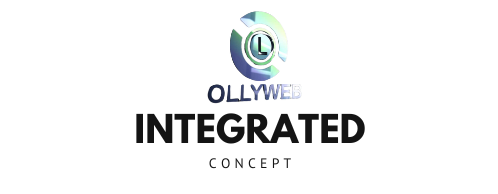How To Start Making Money Quick

Hey there, hustlers! Are you tired of waiting around for payday, wishing you could start making some serious cash right now? Well, buckle up because I've got some killer tips to help you start raking in the dough faster than you can say “cha-ching”! In this article, we're going to dive into the world of quick money-making strategies that will have you counting your Benjamins in no time. So, grab your notepad and get ready to learn how to turn your hustle game up a notch. Let's get this money train rolling!
Identifying profitable opportunities
Alright, let's dive into the world of identifying profitable opportunities! Now, when it comes to making money, it's all about finding those golden chances that can turn your pockets from empty to overflowing. So, how do we go about spotting these opportunities? Well, my friend, it's all about keeping your eyes peeled and your mind open.
First things first, you gotta stay informed. Stay up to date with the latest trends, news, and developments in the market. This could be anything from new technologies to emerging industries. By staying in the loop, you'll be able to spot potential gaps or niches that you can tap into. Remember, knowledge is power!
Next, it's time to do some good old-fashioned research. Dive deep into the market you're interested in and analyze the competition. Look for areas where you can offer something unique or better than what's already out there. It could be a new twist on an existing product or a completely fresh idea. The key is to find a gap in the market that you can fill with your own special sauce.
Lastly, don't be afraid to take risks. Sometimes, the most profitable opportunities are the ones that seem a little out of reach or unconventional. Don't be afraid to think outside the box and take a chance on something that others might overlook. Remember, fortune favors the bold!
So, my friend, keep your eyes open, do your research, and be willing to take a leap of faith. With these strategies in your back pocket, you'll be well on your way to identifying those profitable opportunities that can change your life. Good luck out there!
Developing a strategic plan
So, you wanna talk about developing a strategic plan, huh? Well, let me tell you, my friend, this is no walk in the park. It's like trying to navigate through a maze without a map. But don't worry, I got your back. I'm gonna break it down for you, step by step.
First things first, you gotta know what you want to achieve. You can't just go into this blindly, hoping for the best. You need to have a clear vision of where you want your business to go. Think about your long-term goals, your values, and what sets you apart from the competition. This is the foundation of your strategic plan.
Once you've got your vision locked down, it's time to do some serious analysis. You need to take a good hard look at your business, inside and out. What are your strengths and weaknesses? What opportunities are out there for you to seize? And don't forget about the threats that could knock you off course. This is where you need to be brutally honest with yourself. No sugar-coating allowed.
Now that you've done your analysis, it's time to put it all together. This is where the magic happens. You take all that information and start crafting your strategic plan. Break it down into actionable steps, set clear objectives, and establish a timeline. And don't forget to involve your team in the process. They're the ones who will be executing the plan, so their input is crucial.
So, my friend, developing a strategic plan is no easy task. It takes time, effort, and a whole lot of brainpower. But if you follow these steps, you'll be well on your way to success. So go out there and make it happen!
Setting realistic financial goals
Setting realistic financial goals is a crucial step towards achieving financial success. It's like mapping out your journey before embarking on a road trip. You need to have a clear destination in mind and a plan on how to get there. But here's the thing, you can't just set any random goal and hope for the best. You need to be smart about it and set goals that are attainable and aligned with your current financial situation.
First and foremost, it's important to assess your current financial standing. Take a good look at your income, expenses, and any outstanding debts or financial obligations. This will give you a realistic picture of where you stand and what you can realistically achieve in the near future. It's like taking stock of your resources before making a plan.
Once you have a clear understanding of your financial situation, it's time to set specific and measurable goals. Instead of saying, “I want to save more money,” be more specific and say, “I want to save $500 per month for the next six months.” This way, you have a clear target to work towards and can track your progress along the way. It's like having a GPS guiding you towards your destination, giving you clear directions and milestones to reach.
In addition to being specific and measurable, your goals should also be realistic. It's great to dream big, but setting goals that are too far-fetched or unrealistic can lead to disappointment and frustration. Consider your current income, expenses, and financial obligations when setting your goals. It's like setting a pace that you can comfortably maintain throughout the journey, rather than sprinting at full speed and burning out halfway through. Remember, it's better to achieve smaller goals consistently than to set lofty goals and fall short.
Building a diverse income portfolio
So, you want to talk about building a diverse income portfolio, huh? Well, let me tell you, my friend, it's all about spreading your eggs in different baskets. You don't want to put all your money in one place, because if that one place goes belly up, you're left with nothing but a broken dream and an empty wallet. Trust me, I've been there.
Now, when I say diverse, I mean diverse like a buffet spread at a fancy hotel. You want a mix of different investments that can weather any storm. Think stocks, bonds, real estate, and maybe even some alternative investments like cryptocurrencies or peer-to-peer lending. Each of these has its own risks and rewards, so you gotta do your homework and figure out what works best for you.
But here's the thing, my friend, diversity isn't just about the types of investments you choose. It's also about diversifying within each asset class. For example, if you're into stocks, don't just put all your money in one company. Spread it out across different industries and sectors. That way, if one sector takes a hit, you've still got others to fall back on. It's like having a backup plan for your backup plan.
So, to sum it all up, building a diverse income portfolio is like building a sturdy house. You need a strong foundation of different investments, both traditional and alternative. And within each investment type, you gotta spread your money around like butter on toast. It may take some time and effort, but trust me, it's worth it in the long run. So go out there, my friend, and start building that diverse income portfolio like a boss!
Leveraging online platforms for quick earnings
So, let's talk about leveraging online platforms for quick earnings. I mean, who doesn't want to make some extra cash, right? And with the power of the internet, there are so many opportunities out there just waiting to be explored. Whether you're a student looking to make some pocket money or someone who wants to supplement their income, online platforms can be a game-changer.
First things first, you need to find the right platform for you. There are so many options out there, from freelancing websites like Upwork and Fiverr to online marketplaces like Etsy and eBay. Each platform has its own unique features and target audience, so it's important to do your research and find the one that aligns with your skills and interests.
Once you've found the perfect platform, it's time to showcase your talents. Whether you're a writer, graphic designer, or even a handyman, make sure your profile or listing stands out from the crowd. Use eye-catching visuals, write a compelling bio, and highlight your previous work or experience. Remember, first impressions count, so put your best foot forward.
Now, it's time to start hustling. Take advantage of the platform's features to promote your services or products. Use social media to share your work and attract potential clients or customers. Engage with your audience, respond to inquiries promptly, and provide excellent customer service. Building a strong online presence takes time and effort, but it's worth it in the long run.
So, there you have it. Leveraging online platforms for quick earnings is all about finding the right platform, showcasing your skills, and hustling to attract clients or customers. With a little bit of dedication and hard work, you can turn your online side hustle into a profitable venture. So, what are you waiting for? Get out there and start making some money!
Exploring freelance and gig economy options
So, you're interested in exploring freelance and gig economy options? That's awesome! Let me tell you, the world of freelancing and gig work is a wild ride, but it can also be incredibly rewarding. Whether you're looking to make some extra cash on the side or you want to dive headfirst into a full-time freelance career, there are plenty of opportunities out there for you to explore.
First things first, let's talk about what exactly the gig economy is. Essentially, it's a labor market characterized by the prevalence of short-term contracts or freelance work as opposed to permanent jobs. It's all about flexibility and being your own boss. You get to choose the projects you want to work on, set your own rates, and work on your own terms. It's a great option for those who value independence and want to have more control over their work-life balance.
Now, when it comes to finding freelance and gig economy options, there are a few different routes you can take. One option is to join a freelancing platform like Upwork or Fiverr. These platforms connect freelancers with clients looking for specific skills or services. You can create a profile, showcase your work, and start bidding on projects that interest you. It's a competitive space, but with the right skills and a strong portfolio, you can definitely find success.
Another option is to network and market yourself directly to potential clients. This could involve reaching out to companies or individuals in your industry, attending networking events, or even leveraging social media to showcase your work and attract clients. Building relationships and establishing a strong reputation can go a long way in the freelance world.
Lastly, don't be afraid to think outside the box and explore unconventional gig economy options. There are platforms out there for everything from dog walking to virtual assistance to renting out your spare room on Airbnb. The key is to find something that aligns with your skills and interests, and that you genuinely enjoy doing. After all, the beauty of the gig economy is that you have the freedom to choose what you want to do and how you want to do it.
So, there you have it – a brief introduction to exploring freelance and gig economy options. It's a vast and ever-evolving landscape, but with a little bit of hustle and a whole lot of determination, you can carve out a successful career on your own terms. Good luck, and happy freelancing!
Investing in highyield assets
Investing in high-yield assets can be a game-changer when it comes to growing your wealth. It's like hitting the jackpot in the investment world! High-yield assets are those that offer a higher return on investment compared to other options. They can include stocks, bonds, real estate, or even alternative investments like peer-to-peer lending or cryptocurrency.
When you invest in high-yield assets, you're essentially putting your money to work for you in a way that has the potential to generate significant returns. It's like having a money-making machine that keeps churning out profits. These assets often come with a higher level of risk, but with great risk comes great reward, right?
One of the key benefits of investing in high-yield assets is the potential for exponential growth. Unlike traditional savings accounts or low-yield investments, high-yield assets have the power to multiply your initial investment over time. It's like planting a seed and watching it grow into a mighty oak tree. The higher returns can help you achieve your financial goals faster, whether it's saving for retirement, buying a dream home, or funding your child's education.
But, as with any investment, it's important to do your homework and understand the risks involved. High-yield assets can be volatile and subject to market fluctuations. It's like riding a roller coaster with unexpected twists and turns. That's why diversification is key. By spreading your investments across different high-yield assets, you can mitigate the risk and increase your chances of success. It's like having multiple irons in the fire, ensuring that even if one investment doesn't perform as expected, others may make up for it.
So, if you're ready to take your investment game to the next level, consider exploring high-yield assets. They offer the potential for significant returns and can help you achieve your financial goals faster. Just remember to do your research, diversify your portfolio, and buckle up for the ride of a lifetime!
Implementing effective budgeting and expense management
So, let's talk about implementing effective budgeting and expense management. Now, I know budgeting may not be the most exciting topic, but trust me, it's crucial for keeping your finances in check. Think of it like this: budgeting is like having a roadmap for your money. It helps you prioritize your spending, save for the future, and avoid unnecessary debt.
Now, when it comes to implementing an effective budget, there are a few key steps you need to take. First off, you need to track your expenses. This means keeping a record of every single penny you spend. It may sound tedious, but it's the only way to truly understand where your money is going. You can use apps or even just a good old-fashioned spreadsheet to keep track of your expenses.
Once you have a clear picture of your spending habits, it's time to set some financial goals. What do you want to achieve with your money? Maybe you want to save up for a dream vacation, pay off your student loans, or start investing. Whatever it is, having specific goals will give you something to work towards and help you stay motivated. And don't forget to break your goals down into smaller, more manageable milestones. It's easier to stay on track when you can see progress along the way.
Now, here's where the real magic happens: creating a budget. This is where you allocate your income towards different categories, like housing, transportation, groceries, and entertainment. The key here is to be realistic and flexible. You don't want to set a budget that's so strict you can't enjoy life, but you also don't want to overspend and end up in debt. It's all about finding that balance. And remember, your budget isn't set in stone. It's okay to make adjustments as needed. Life happens, and your budget should be able to adapt to changes. So, be proactive and review your budget regularly to make sure it's still working for you.
Maximizing productivity and time management
Alright, let's talk about maximizing productivity and time management. Now, I know we all have those days where it feels like there just aren't enough hours in the day to get everything done. But fear not, my friend, because I've got some tips and tricks up my sleeve to help you make the most of your time and boost your productivity to the max!
First things first, let's talk about setting goals. It's important to have a clear vision of what you want to achieve and break it down into smaller, manageable tasks. This way, you can prioritize your time and focus on the most important things first. And hey, don't forget to celebrate those small victories along the way!
Next up, let's talk about the power of organization. Now, I'm not saying you need to color-code your entire life, but having a system in place can really work wonders. Whether it's using a planner, a to-do list app, or even just a good old-fashioned sticky note, find a method that works for you and stick to it. Trust me, when you can see everything laid out in front of you, it's much easier to stay on track and avoid getting overwhelmed.
Lastly, let's not forget about the importance of taking breaks. I know, I know, it might sound counterintuitive, but trust me on this one. Our brains need time to recharge and refuel, so make sure to schedule in some downtime. Whether it's going for a walk, practicing some mindfulness, or even just taking a power nap, find what helps you relax and reset. You'll come back to your tasks feeling refreshed and ready to tackle anything that comes your way.
So there you have it, my friend. By setting goals, staying organized, and taking breaks, you'll be well on your way to maximizing your productivity and managing your time like a pro. Remember, it's all about finding what works for you and sticking to it. Now go out there and conquer the world, one productive day at a time!
Continuously learning and adapting to market trends
So, let's talk about this subheading: continuously learning and adapting to market trends. Now, in this fast-paced world we live in, it's crucial for businesses to stay on top of the game. And one way to do that is by continuously learning and adapting to market trends. You see, the market is like a wild beast, always changing, always evolving. And if you want to survive and thrive, you gotta keep up with it.
Now, when we say “continuously learning,” we're not just talking about reading a few articles here and there. No, no, my friend. We're talking about diving deep into the ocean of knowledge, exploring every nook and cranny, and staying up-to-date with the latest trends, technologies, and consumer behaviors. It's like being a detective, always on the lookout for clues and insights that can help you make better decisions for your business.
But it doesn't stop there. Oh no, my friend. Adapting to market trends is like being a chameleon. You gotta be able to change your colors and blend in with the environment. If the market shifts towards a new trend, you gotta be ready to pivot, to adjust your strategies and offerings accordingly. It's all about being flexible and agile, like a ninja on a mission. And trust me, when you can adapt to market trends, you'll be one step ahead of your competitors, and that's a pretty sweet spot to be in.
So, how do you continuously learn and adapt to market trends? Well, it starts with having a curious mind and a hunger for knowledge. You gotta be open to new ideas, willing to explore uncharted territories, and never settle for the status quo. Surround yourself with industry experts, attend conferences and workshops, and keep an eye on what your competitors are doing. And most importantly, listen to your customers. They are the ones who will give you the most valuable insights into what's hot and what's not. So, my friend, embrace the ever-changing nature of the market, and let it guide you towards success.
Another post you might find useful is, How To Start Earning From Quora.
I've also written about How To Start Making Money With No Money, so feel free to check that out, or bookmark it for later!






